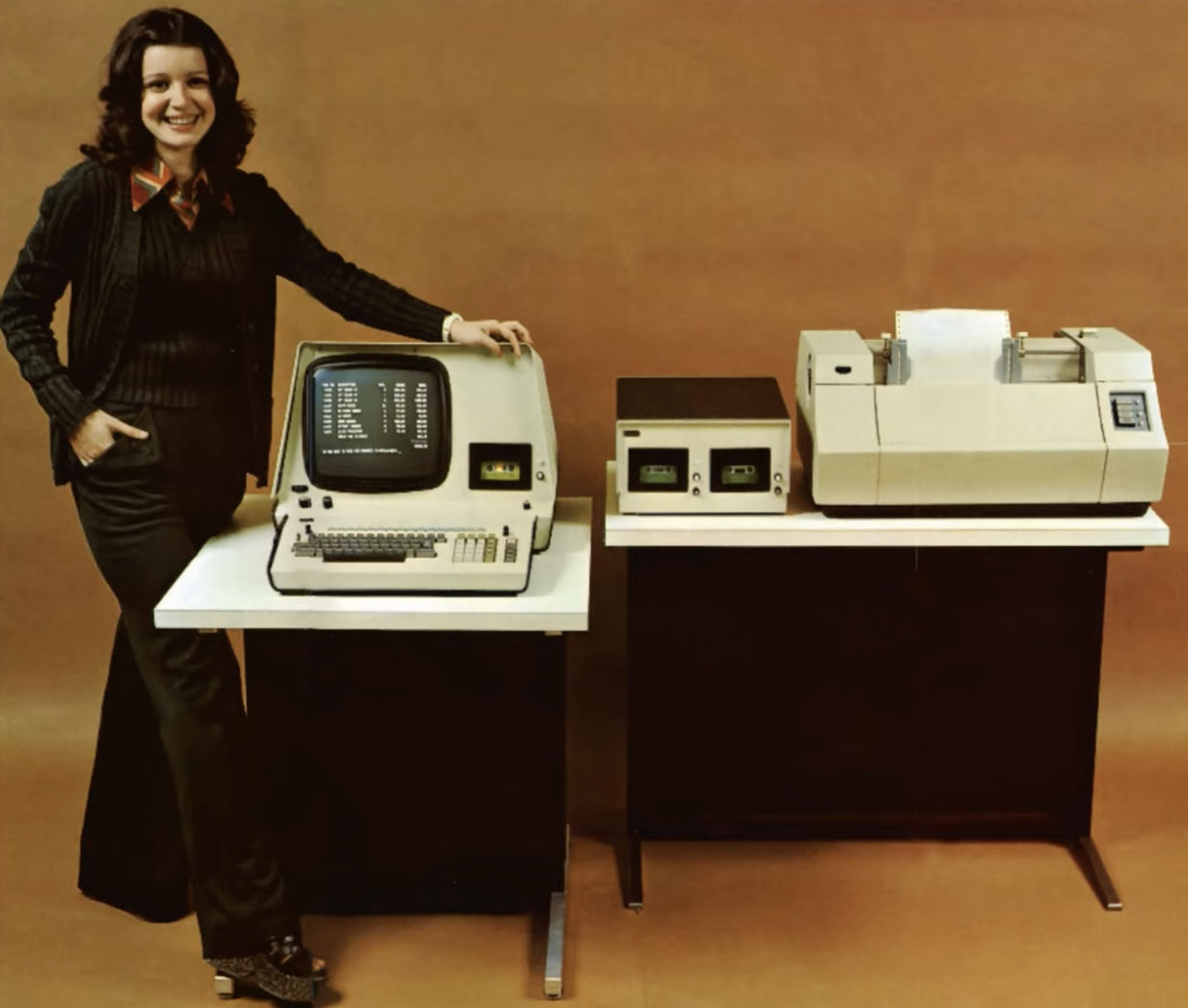An anecdote about migrating from typewriters to computers
An engineer/technical editor of a friend once told me of his past company's challenges moving from a paper-based to computer-based editing process in the late 1970s/early 80s.
The system used was the Wang 2200 PC, consisting of fixed 12" green monitor and keyboard built into a desk, with a separate processing unit housing twin 8" 64KB floppy disk slots: one disk for the operating system, and the other for file storage. Programmes pre-loaded were a word processor, a database manager, and a spreadsheet program. Here's an amusing advertisement of the Wang system that gets a jab in at Apple.
The company had a team of 2-3 staff who would copy out handwritten documents with mechanical typewriters.
Their workflow was as follows:
- The typists typed up the handwritten documents, and passed them to editorial.
- In pencil the editors noted typos and further changes in pencil on the typed transcription, and returned them to the typists.
- The typists reviewed these notes and corrected the errors by retyping the relevant pages.
- The typists submitted the changed documents to editorial for review once more.
- Repeat steps 2 - 4 until ready for publication.
These typists had no experience with computers and their then-novel textediting interfaces, nor had they undertaken any training. The result of the computer's sudden introduction into the above workflow was that, when the second round of changes was submitted to my friend the editor, he found these typo-corrected documents contained new errors in different places to the first round of corrections.
They were manually typing the whole printout back into the computer's word processing program in a new document for the second round of edits.
